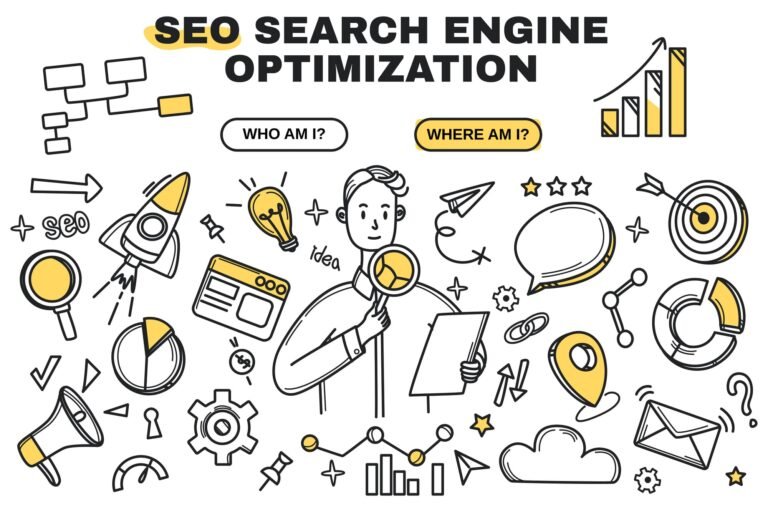For years, the goal of SEO for Australian businesses, including those right here in Rosebud, Victoria, has been to rank within the top results of traditional search engine results pages (SERPs). But the digital landscape is evolving rapidly. The rise of Generative AI in search, exemplified by Google’s AI Overviews, and the increasing use of voice search are fundamentally changing how people find information online. This means it’s time for a new approach: Generative Engine Optimisation (GEO) and Voice Search Optimisation.
This article will guide Australian businesses on how to adapt their SEO strategies to thrive in this new era, ensuring your content is discoverable not just by traditional algorithms, but also by intelligent AI and spoken queries.
Table of Contents
The Dawn of Generative AI in Search
Forget scrolling through pages of blue links. Generative AI, powered by large language models, aims to provide direct, comprehensive answers and summaries at the very top of search results. Google’s AI Overviews are a prime example. This means that simply ranking in the top 10 might not be enough anymore. Your content needs to be good enough to be selected as a source for these AI-generated responses. This is the core of Generative Engine Optimisation (GEO).
What is Generative Engine Optimisation (GEO)?
GEO is the process of optimising your content so that it is more likely to be understood, cited, and used by generative AI algorithms to create their responses. This involves:
Providing Comprehensive and High-Quality Information: AI models favour content that thoroughly covers a topic and offers genuine value to the user. Think in-depth guides, detailed explanations, and well-researched articles relevant to your Australian audience.
Structuring Your Content Clearly: Use headings (H1, H2, H3), subheadings, bullet points, and numbered lists to make your content easily digestible for both humans and AI. Clear structure helps AI models understand the key takeaways and relationships between different pieces of information.
Answering Questions Directly: Since both voice search and AI often revolve around questions, make sure your content explicitly answers relevant queries. Think about the “who, what, where, when, why, and how” related to your industry and location (like Rosebud, Victoria).
Leveraging Structured Data (Schema Markup): Implement schema markup to provide search engines (including AI) with more context about the type of content on your page (e.g., article, product, FAQ, local business). This helps them understand your content’s meaning and relevance more effectively.
Building E-E-A-T (Experience, Expertise, Authoritativeness, Trustworthiness): While AI is processing information, it still relies on signals of quality and trustworthiness. Ensure your content demonstrates genuine expertise, author experience, and a strong reputation within your niche in Australia.
Optimising for the Conversational Nature of Voice Search
Alongside the rise of AI, voice search continues its upward trajectory. Users are increasingly comfortable asking their smart devices and phones spoken questions, especially for local searches like “best coffee near me in Rosebud.” Optimising for voice search requires a slightly different approach:
Focus on Long-Tail, Conversational Keywords: Voice queries tend to be longer and more natural-sounding than typed searches. Instead of “pizza Rosebud,” someone might ask, “Hey Google, where can I get a good vegetarian pizza in Rosebud?” Tailor your content and keywords to these longer, more conversational phrases.
Answer the “Why” and “How”: Voice searches often seek specific answers or instructions. Create content that directly addresses these types of queries. Think “how-to” guides, FAQs, and articles that explain the reasoning behind certain concepts relevant to your Australian business.
Think Local, Local, Local: Voice search is heavily used for local information. Ensure your Google Business Profile is fully optimised and accurate, with your correct address, phone number, opening hours, and customer reviews. Use location-based keywords naturally throughout your website content (e.g., mentioning “servicing the Rosebud area”).
Ensure Mobile-Friendliness and Speed: Voice searches are often performed on the go. A mobile-friendly website that loads quickly is crucial for providing a positive experience to voice search users.
Integrating Your New SEO Strategies
Optimising for Generative AI and voice search isn’t about abandoning traditional SEO; it’s about evolving your approach. Continue to focus on creating high-quality, user-friendly content, but now with a greater emphasis on:
Answering questions comprehensively.
Structuring information for AI understanding.
Using natural language and long-tail keywords.
Prioritising local SEO, especially for voice queries in your area (like Rosebud).
Building E-E-A-T to establish trust with both users and AI.
The Role of IT Business Solutions: Powering Your Business Growth
Implementing these new SEO strategies effectively requires a solid technological foundation. IT Business Solutions: Powering Your Business Growth can ensure your website is technically sound, mobile-friendly, and has the necessary framework (like schema markup capabilities and fast loading speeds) to perform well in this evolving search landscape. They can also help you analyse your data to understand which types of queries are driving traffic and provide insights into how to optimise for the future of search.
Conclusion
The way people search for information is changing, and Australian businesses need to adapt to thrive. By understanding the principles of Generative Engine Optimisation (GEO) and optimising for the conversational nature of voice search, you can ensure your content remains discoverable and valuable in this new era of search. Embrace these new strategies, focus on providing high-quality, question-answering content, and watch your Australian business gain a competitive edge in the ever-evolving digital world, whether you’re serving the local community of Rosebud, Victoria, or reaching customers across the nation.
Frequently Asked Questions (FAQs)
Will traditional SEO become obsolete?
No, traditional SEO principles like keyword research, link building, and content optimisation are still important. However, the focus is shifting towards content that directly answers user questions and is easily understandable by AI.
How can I find out what questions my audience is asking?
Use keyword research tools that focus on question-based queries (e.g., AnswerThePublic), monitor online forums and social media discussions in your industry, and pay attention to the types of questions your customers ask directly.
Is optimising for AI different from optimising for voice search?
There are overlaps, particularly the focus on natural language and answering questions. However, GEO focuses on making your content a trustworthy source for AI-generated responses, while voice search optimisation prioritises being the top result for spoken queries, often with a local intent.
How important is local SEO in this new landscape?
Local SEO is arguably even more critical. Voice searches often have local intent (“find a plumber near me”), and AI Overviews frequently provide local recommendations. Ensure your Google Business Profile is a top priority.
What are some tools that can help with GEO and voice search optimisation?
Beyond standard SEO tools, consider using question research tools, tools that help you implement schema markup, and analytics platforms that can segment your traffic by device (to understand voice search trends). Monitoring Google Search Console for question-based queries is also valuable.

